Tatsuo Miyajima
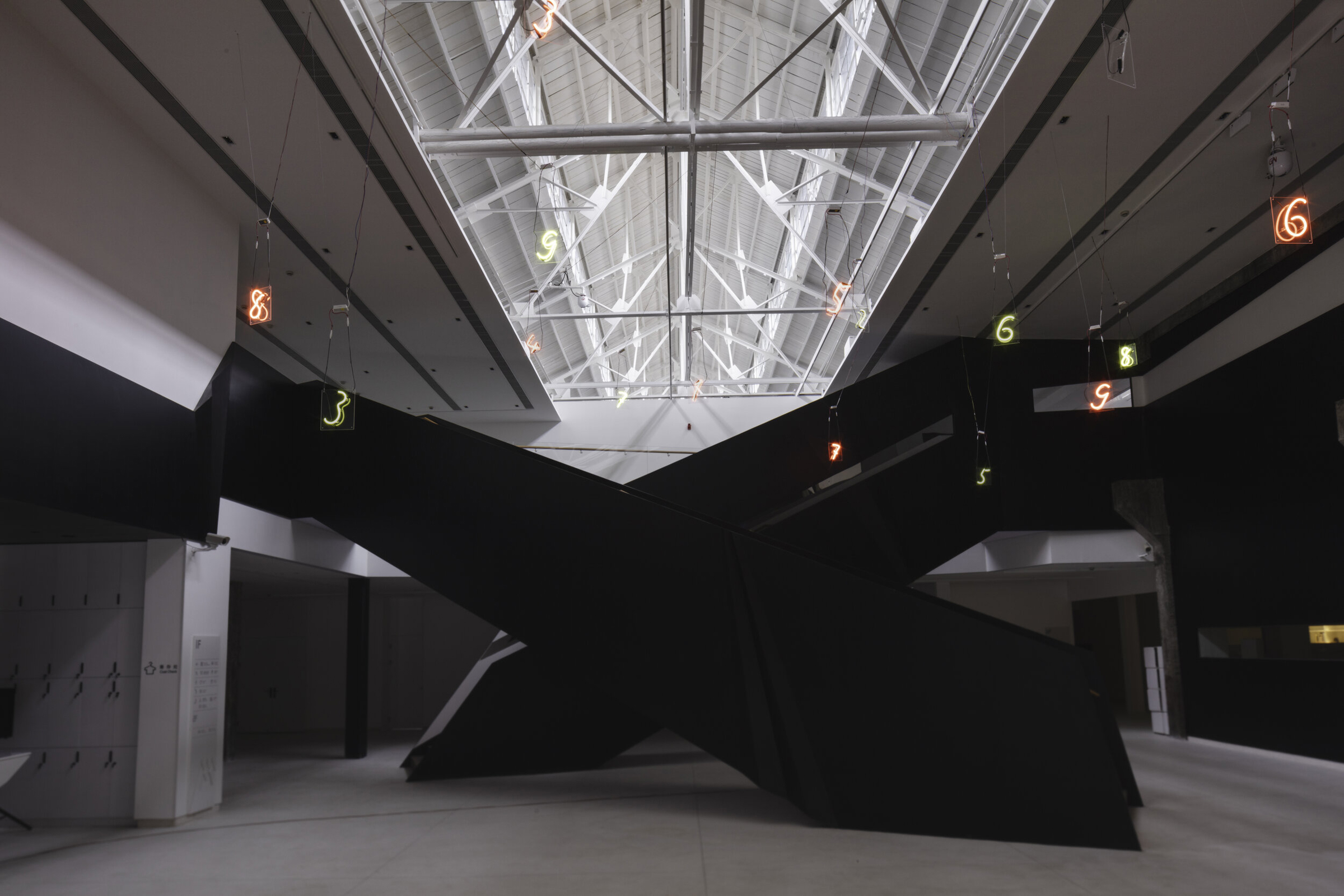
“If you want to use technology to create your work, stop studying technology”
Sometimes it can feel like life is dominated by numbers, sums and allotments of time, all looming over us in with the blinking flashing urgency that comes with our increasingly digital environments. With Tatsuo Miyajima’s work, this feeling has become reality. Whilst his art ranges across a wide variety of mediums there is a single focus; numbers. Specifically the kind you find on old digital clocks or calculators. Miyajima is one of Japan’s leading sculptures and installation artists, and his work is centred around his use of LED counters, which flash sequences of numbers from one to nine. His work is also heavily influenced by Eastern and Buddhist philosophy. NR Magazine joined the artist in conversation.
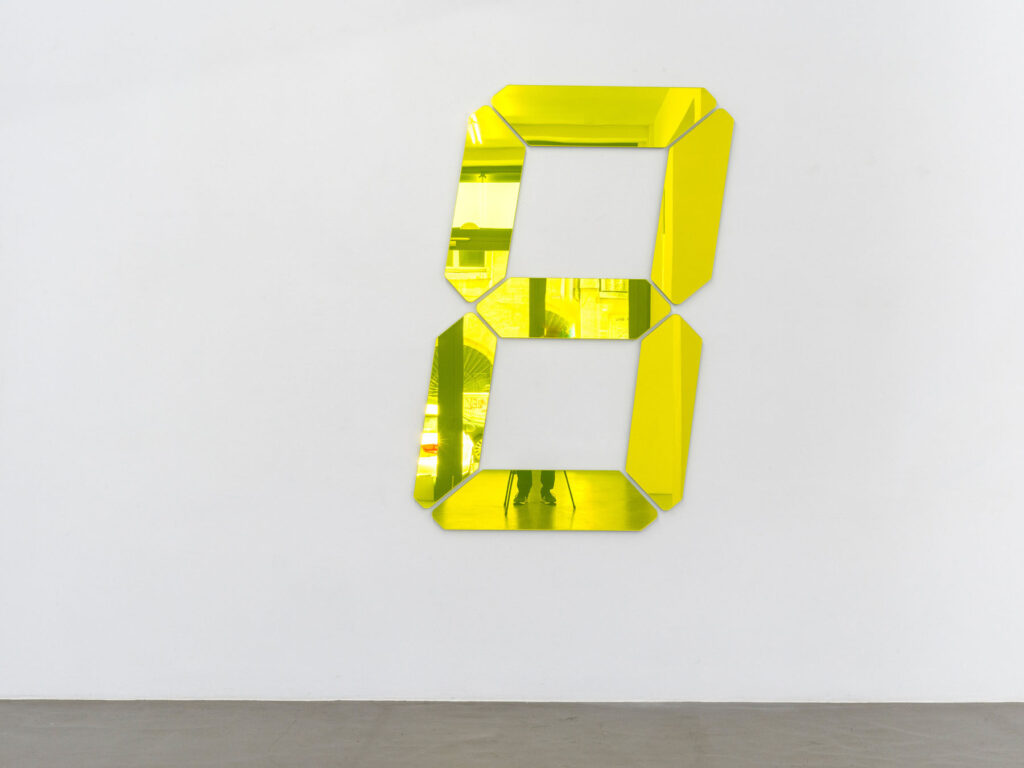
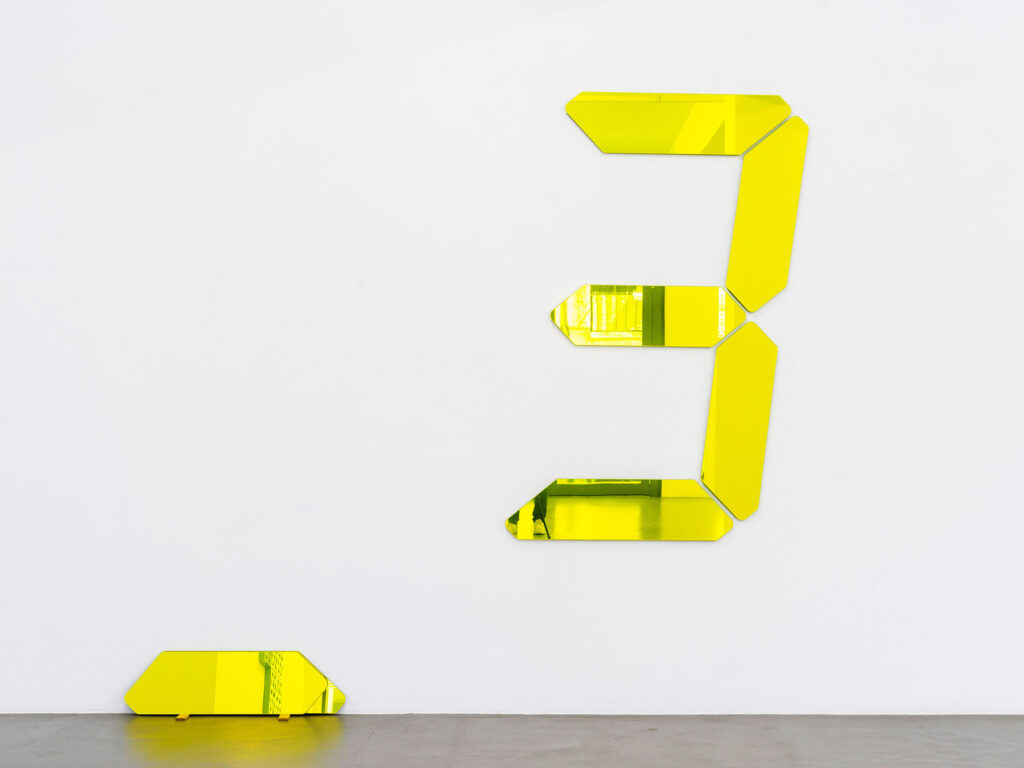
One of your three artistic concepts is ‘keep changing’. How do you think your work has changed throughout your career?
For the first 7 years after my debut, I was only making installations that showed LED works in a dark room. However, in 1995, I had an opportunity to do a performance in London, and from that point on, I began to do works that involved people and asked them to participate. Since 2005, I have been working with a wider range of materials, including digital numeric drawings, photographs, and computer programs, in addition to LED works. Since 2010, I have been using AI in my work, and I am still expanding the range of my expression with various materials.
You have said that “art has long been isolated from the real world, and spoiled within a framework of the ‘art world’. Do you think social media apps, such as Instagram and Tiktok, on which creators can show their works is an effective way to break down these barriers?
In terms of the fact that many people can express themselves easily, I say yes. However, the point that the expression is too concerned about the reputation of “likes”. It means No.
How has the pandemic affected you and has it had any impact on the way you approach your art practice?
It was sad that I could not go abroad because of the pandemic. However, I was grateful for the fact that I was able to work calmly. I am also glad that the pandemic has made it clear that art is an essential and important part of human life. It is hard to say right now how this pandemic will affect us in the future. However, I am sure that it will naturally appear in my works in the future.
Tell me more about your recent work Counter Object – 000 (2020). What was the process behind it?
In fact, this work was also born out of the pandemic. 20 years ago, I did an installation in Stuttgart where I placed mirrors of digital numbers on the floor. During the pandemic, the Buchmann Galerie organized a group exhibition, but I could not go to Germany. So, Buchmann suggested that I show something similar to the work I did in 2000. I proposed a new idea. I proposed a new idea, which was to display mirror-like digital numbers on the wall and change them with dice. This is Counter Object – 000, which I plan to develop further by using different materials.
Your art is largely based in technology, are there any new technologies that you are interested in incorporating into your artwork?
I always have a concept and use technology as a tool to realise it, but not the other way around. If technology is the first step in creating a work of art, it will not be art, but only product design.
Although a lot of your work revolves around numbers, the number 0 is never shown in your work, why is that?
This is because 0 means “death”.
“Death is invisible to the eye. That’s why I always represent ‘0’ as blank, or dark so that I can’t see it.”
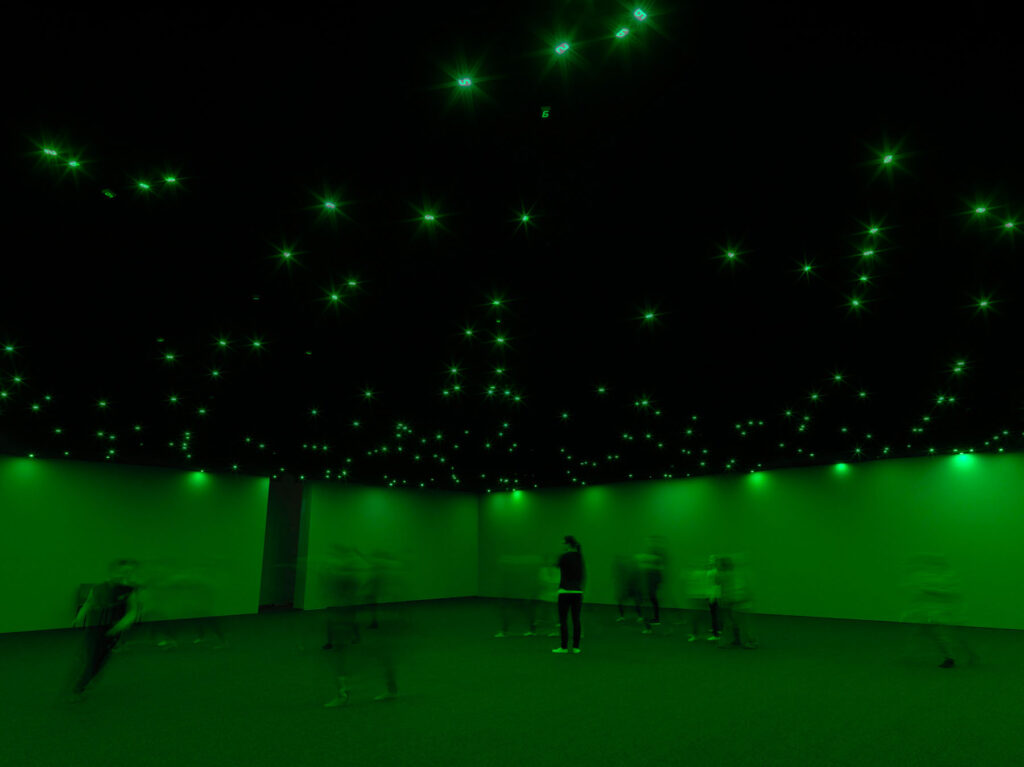
Like your work, much of the world relies heavily on technology. Have you ever considered what would happen if that technology was no longer available to us and if that ever happened what artworks would you create then?
If I had been born in the third century, I would have made “mosaics” out of stone. If I had been born in the 13th century, I would have been painting with “tempera”. And if I had been born in the 18th century, I would have definitely painted in “oil”. All these techniques were the latest technology of their time. You can see that artists have always expressed themselves with technology that is adapted to the times.
What was the particular concept behind C.F. Loop: Helix no. 2 and was there any reason why you chose blue for the LEDs?
C.F. Loop is a Study Model that considers the structure of time. Time is connected to a circle, but it must be an irregularly shaped circle. I expressed this by having the numbers counting 9-1 lined up in a circular pattern. In the series of works, I also used red and green LEDs. Each color expresses the differences of each character.
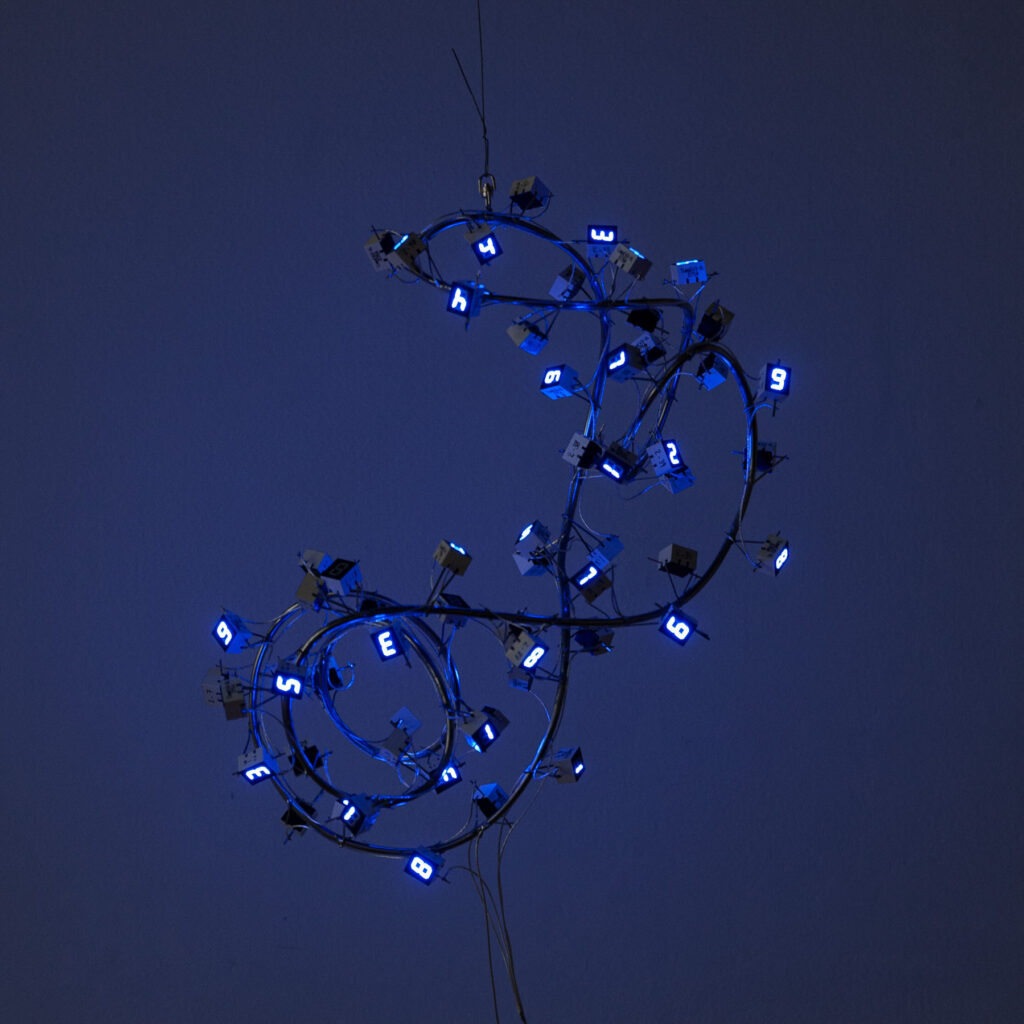
What exactly is it that you want people to take away from your work?
I do not impose a concept on the viewer.
“Artworks are not meant to give something to the audience. Rather, I believe it is something that allows the viewer to discover the sensitivity and imagination within themselves.”
What was the most exciting project you worked on and why?
I am currently working on a piece called “Sea of Time – Tohoku”, which will be my most exciting project yet. After experiencing the 2011.3.11 Great East Japan Earthquake and Tsunami, I have created a project plan to work with people in Tohoku. LED devices used in the project represent the eternity of life. I am aiming to ask 3,000 people mainly from the affected areas to set the speed of the LED display to create an artwork. I plan to install it at a high-class location in the Tohoku area where we can see the sea.
Your work Hiten (2020) reminds me somewhat of a map of the world. Were you trying to create any particular shapes with the placement of the LED numbers or is it purely abstract?
This work HITEN refers to an angel painting in a cave in Dunhuang, China. This angel is clothed in a robe of extreme colors and is fluttering freely in the sky without being controlled by anyone. So it is an abstract way of arrangement, placed so that it can fly freely in the sky.
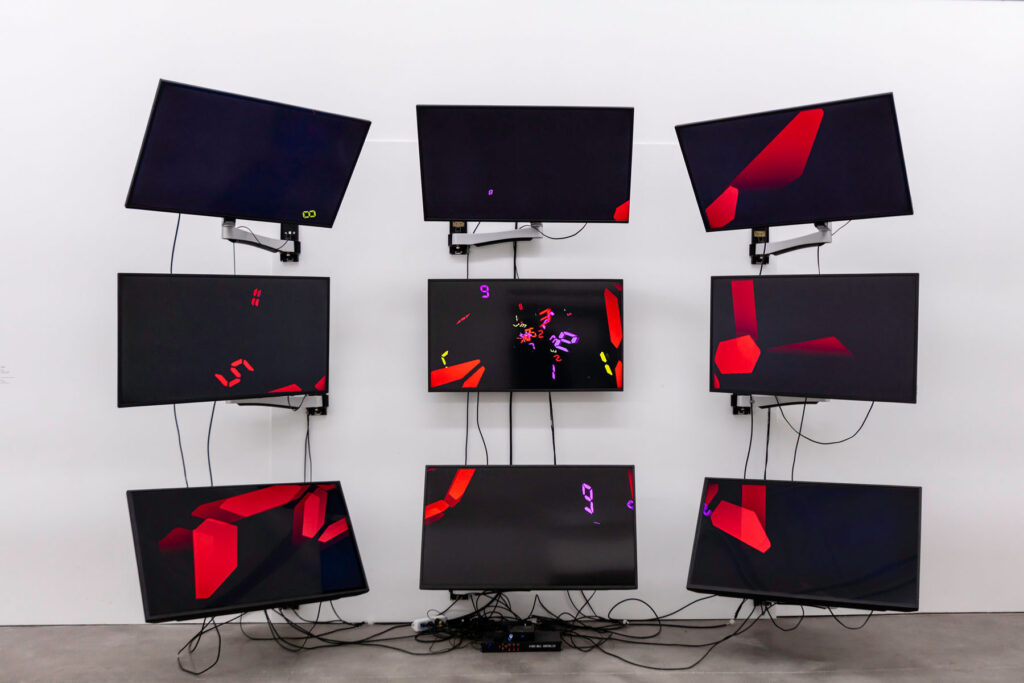
What advice do you have for young creatives looking to create art with technology?
If you want to use technology to create your work, stop studying technology. There are many technology specialists who are better than you. Instead, you should study philosophy, anthropology, and art, and focus on creating original ideas. Then you can use technology to express them.
Credits
Images · Tatsuo Miyajima
https://tatsuomiyajima.com/